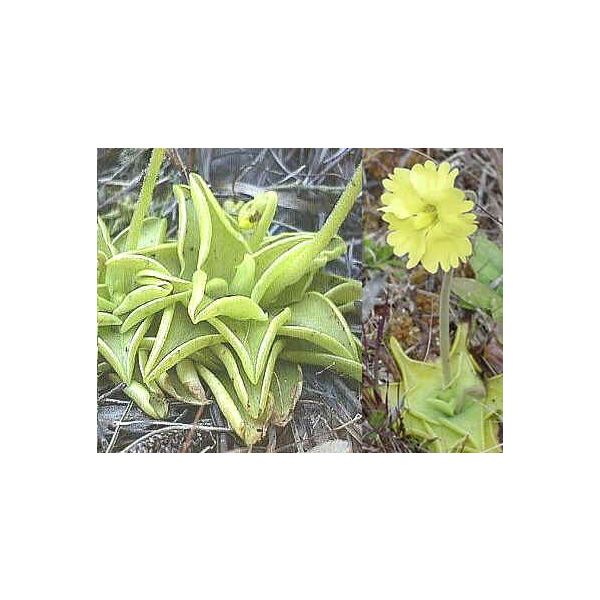Pinguicula Lutea Seeds (Yellow Butterwort Seeds)
Pinguicula Lutea Seeds (Yellow Butterwort Seeds)
This species stays all the time under rosette form. This is a large Butterwort, the rosettes can be up to 6 inches or 15 cm across.
Availability: Out of stock
SKU
Pinguicula Lutea
Pinguicula lutea, the Yellow Butterwort is a warm-temperate species. Pinguicula lutea lives in the South-east USA and can be found in Florida, along the Gulf Coastal plain from North to Southeast North Carolina, to the Eastern area of Louisiana. It grows in sandy bogs and open pines wood area.
This species stays all the time under rosette form. This is a large Butterwort, the rosettes can be up to 6 inches or 15 cm across. The leaves of Pinguicula are in basal rosettes and are covered with sticky, mucilage-secreting and digestive hairs. The margins roll inward in response to contact of the hairs by potential prey organisms. Nitrogenous and other nutrients released by the digested prey supplement the plant's requirements. These modifications help such plant species compete in nutrient-deficient habitats. The leaves are a conspicuous yellow-green color and the flowers are large, fragrant and bright yellow born on stalks up to about 15 inches tall. Pinguicula Lutea flowers in March on the Gulf coast.
These plants require a little dormancy each Winter. During this time, the plant will remain green, but will slow down growth. The plants doesn?t have really cold Winter in his habitat. With the rise of Spring temperatures, the plants will begin a new growth cycle.
Hardiness zone 11, (4øC/40øF) in Winter. Pinguicula lutea prefers a drier habitat than the other Pinguicula of the Southeast USA. The plants grow in a mix of 1/2 peat moss and 1/2 sand. In culture, the plant prefers to stay around 10-15 øC during Winter. In Summer, they like temperatures between 20ø to 30ø C. The light can be high even with direct sun. Best grown outdoors as a container or potted plant. Because of their specific soil requirement, avoid planting them in the ground. Excellent for the deck or patio. Use rain water poured on the top of the pot taking care not to wet the rosette. A good aeration is also necessary for Pinguicula Lutea to avoid a rotting of the plants.
| Label | Pinguicula lutea |
|---|---|
| Common name | Yellow Butterwort |
| Genus | Pinguicula |
| Species | Pinguicula lutea |
| Germination | Sow directly on the surface of your moist but not soaked soil mix. Cover the top of the pot with clear plastic so the humidity will remain high, place them in an area with real nice strong light and keep the temperature around 20øC/68øF, 24øC/75øF. When you see some tiny plants starting to sprout, slowly open the top of the pot, a little each day, so that the new seedlings don't go into shock from the humidity being lowered too quickly. It takes 2 to 4 weeks for the seeds to germinate. It can be more, don't give up. |
| Price View | Price Range |

